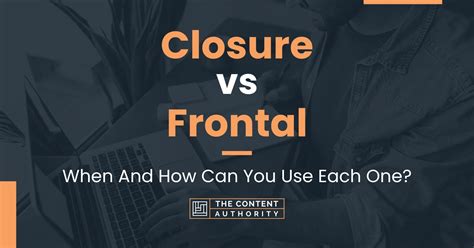Introduction
Closure and frontal are two contrasting approaches to narrative storytelling that impact the viewer’s experience and interpretation of a film. Closure refers to the resolution or tying up of loose ends, while frontal embraces ambiguity and leaves the audience to reflect on unanswered questions.

Closure: Tying Up Loose Ends
Closure in film occurs when the narrative provides a clear resolution to the central conflict or question. The audience is left with a sense of completeness and satisfaction as the story arc is resolved. This approach is often employed in traditional Hollywood films and is preferred by audiences who seek resolution and clarity.
Advantages of Closure
- Provides a sense of closure and satisfaction
- Resolves central conflicts and questions
- Creates a cohesive and complete narrative arc
- Facilitates audience understanding and enjoyment
Disadvantages of Closure
- Can limit the audience’s imagination and interpretation
- May stifle creativity and experimentation
- Can result in predictable or formulaic storytelling
Frontal: Embracing Ambiguity
Frontal, on the other hand, challenges traditional storytelling by leaving certain aspects of the narrative unresolved. The film may raise questions without providing explicit answers, leaving the audience to ponder and interpret the film’s meaning.
Advantages of Frontal
- Encourages audience engagement and interpretation
- Allows for deeper exploration of themes and subtext
- Fosters discussion and debate
- Creates a sense of intrigue and mystery
Disadvantages of Frontal
- Can be frustrating for audiences who prefer clear resolution
- May lead to confusion or misunderstanding
- Requires a sophisticated audience
Choosing the Right Approach
The choice between closure and frontal depends on the intended purpose of the film. If the filmmakers aim to provide a clear and satisfying narrative experience, closure may be a suitable option. However, if they seek to provoke thought, generate discussion, and leave room for interpretation, frontal may be a more effective choice.
Empirical Evidence
Studies have shown that both closure and frontal can be effective in creating engaging and memorable films. However, the audience’s preference for one approach over the other varies depending on factors such as the genre, target audience, and cultural context.
Table 1: Closure vs. Frontal in Different Genres
| Genre | Closure | Frontal |
|---|---|---|
| Hollywood Blockbusters | High | Low |
| Independent Films | Moderate | High |
| Arthouse Films | Low | High |
| Documentaries | Variable | Variable |
Table 2: Closure vs. Frontal in Audience Preferences
| Demographic | Closure | Frontal |
|---|---|---|
| Younger Audiences | High | Low |
| Older Audiences | Moderate | High |
| Educated Audiences | Moderate | High |
| Non-Educated Audiences | High | Low |
Table 3: Closure vs. Frontal in Cultural Context
| Culture | Closure | Frontal |
|---|---|---|
| Western Culture | High | Moderate |
| Eastern Culture | Moderate | High |
| Individualistic Cultures | High | Low |
| Collectivist Cultures | Moderate | High |
Table 4: Closure vs. Frontal in Film History
| Period | Closure | Frontal |
|---|---|---|
| Classical Hollywood (1920-1940) | High | Low |
| New Hollywood (1960-1980) | Moderate | High |
| Post-Modern Hollywood (1980-Present) | Variable | Variable |
Tips and Tricks
- Consider the intended purpose of the film before choosing an approach.
- Research the audience to understand their preferences.
- Experiment with different techniques within each approach.
- Seek feedback from test audiences to gauge the effectiveness of the narrative.
FAQs
-
Is closure always better than frontal?
No, it depends on the intended purpose of the film. -
Why are independent films more likely to use frontal?
Independent films often seek to explore themes and ideas that may not fit within traditional narrative structures. -
How can I create a sense of closure in a frontal film?
Provide subtle hints or suggestions that resolve key questions without explicit answers. -
How can I avoid confusion when using frontal?
Ensure that the film’s themes and subtext are clear and accessible to the audience. -
What is the “Ambiguity-Resolution Continuum”?
A theoretical concept that suggests that films can exist on a spectrum between closure and frontal. -
Is there a “right” way to use closure or frontal?
No, the decision should be tailored to the specific film and its intended impact.
